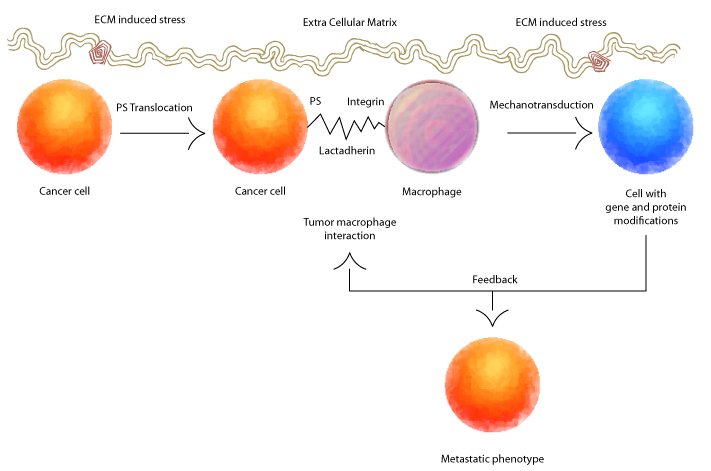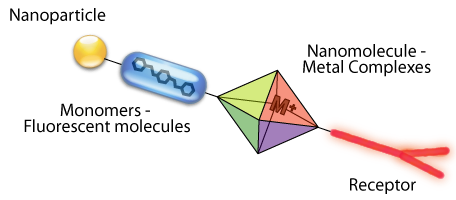Research focus
Cancer metastasis
Metastasis is the main reason for cancer related fatalities. The tumor microenvironment is considerably harder compared to that for normal cells. The pressure on tumor cells due to the stiffening microenvironment and restricted interstitial flow of fluids could be 15-30 times larger than that for a normal cell. Cell membranes possess mechanosensitive lipids and proteins. Additionally there is an increased population of macrophages in the tumor microenvironment and increased interaction of macrophages with tumor cells. This raises the following overarching question:
Overarching question
What is the role of extracellular mechanical stress in cancer metastasis?
Research areas
- The role of mechanosensitive molecule phosphatidylserine in mediating tumor-cell macrophage interaction. PS is overexpressed and surface exposed in tumor cells than in normal cells.
- The influence of extracellular matrix stress on expression levels of mechanosensitive membrane proteins such as E-cadherin and αvβ3 integrin. Mechanism of transduction of mechanical stress through cellular architecture.
- Stochasticity in gene expression due to mechanical stress. How are genes important in metastasis affected by mechanical stress?
- Feedback mechanism – how is the transduced stress relayed back to the membrane? In particular how does this influence phosphatidylserine expression and translocation? How does this affect the expression levels of mechanosensitive membrane proteins and the mechanical properties of cell membranes?

Molecular Lego Nanosensors for targeted detection

A nanosensor construct to detect chemical and biological toxins at very low concentrations is being developed employing the following principles:
- Molecular lego approach linking nanomaterials, fluorescent molecules, and receptors to provide flexibility in the sensor construct to optimize signal generation upon binding a target toxin.
- Highly specific synthetic receptors for chemical toxins such as nerver gas agents.
- Signal amplification by signal transduction through the sensor construct then a toxin is bound.
- Further signal amplification by gap dependent resonant coupling (nanophotonics) of the fluorescent molecules of the molecular lego attached to a nanomaterial composite with surface plasmonic enegy levels.
- Generation of fluorescence, photoacoustic, absorption, and surface plasmon signals when a target toxin is bound.
- Array of molecular lego nanosensors that are wirelessly networked for remote monitoring of toxins.